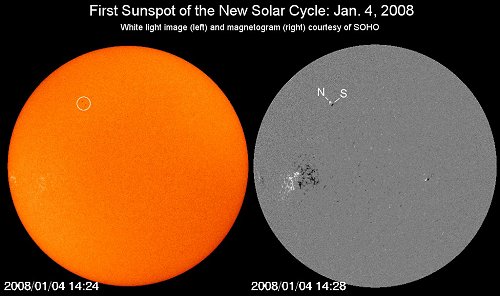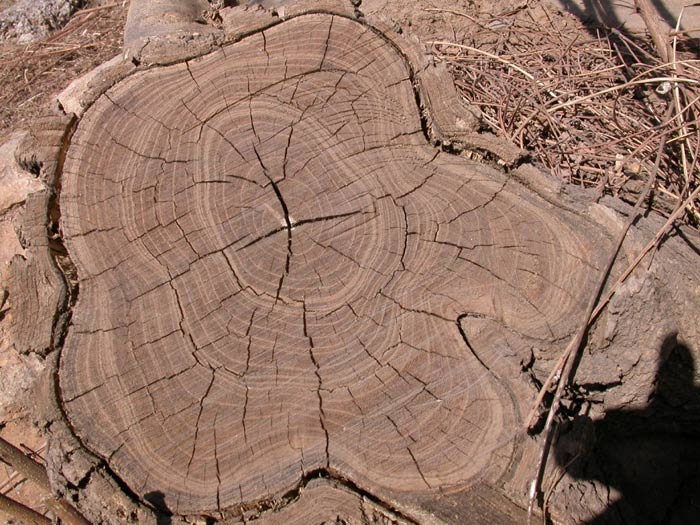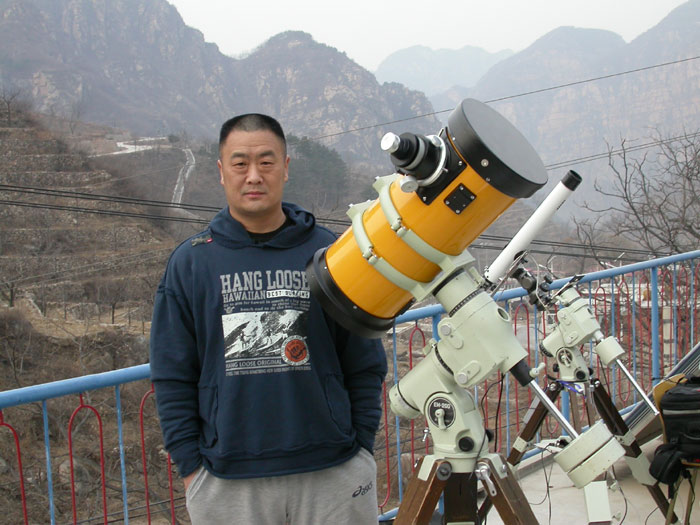
 雪山飞鱼
发表于 2008-3-10 00:52
|
显示全部楼层
|阅读模式
雪山飞鱼
发表于 2008-3-10 00:52
|
显示全部楼层
|阅读模式
来自: 中国–北京–北京–朝阳区 中国数码港科技有限公司BGP节点
Jan. 10, 2008: Hang on to your cell phone, a new solar cycle has just begun.
"On January 4, 2008, a reversed-polarity sunspot appeared—and this signals the start of Solar Cycle 24," says David Hathaway of the Marshall Space Flight Center.
Solar activity waxes and wanes in 11-year cycles. Lately, we've been experiencing the low ebb, "very few flares, sunspots, or activity of any kind," says Hathaway. "Solar minimum is upon us."
The previous solar cycle, Solar Cycle 23, peaked in 2000-2002 with many furious solar storms. That cycle decayed as usual to the present quiet leaving solar physicists little to do other than wonder, when would the next cycle begin?
The answer is now.
"New solar cycles always begin with a high-latitude, reversed polarity sunspot," explains Hathaway. "Reversed polarity" means a sunspot with opposite magnetic polarity compared to sunspots from the previous solar cycle. "High-latitude" refers to the sun's grid of latitude and longitude. Old cycle spots congregate near the sun's equator. New cycle spots appear higher, around 25 or 30 degrees latitude.
The sunspot that appeared on January 4th fits both these criteria. It was high latitude (30 degrees N) and magnetically reversed. NOAA named the spot AR10981, or "sunspot 981" for short.
Sunspot 981 was small--only about as wide as Earth, which counts as small on the grand scale of the sun--and it has already faded away. But its three day appearance on Jan. 4-6 was enough to convince most solar physicists that Solar Cycle 24 is underway.
太阳黑子的活动与地球气候关系密切。下面的树桩是北京香山公园附近砍伐的,从树轮看有20多年的树龄,可以清晰看到23-22太阳活动周期的痕迹。
[ 本帖最后由 雪山飞鱼 于 2008-3-10 09:59 编辑 ] |
-
Images of the first sunspot of Solar Cycle 24 taken by the NASA/ESA Solar and Heliospheric Observato

-
树桩上可以清晰看到2个太阳活动周期的痕迹

-
3月7日-8日黄松峪天文观测之后

|